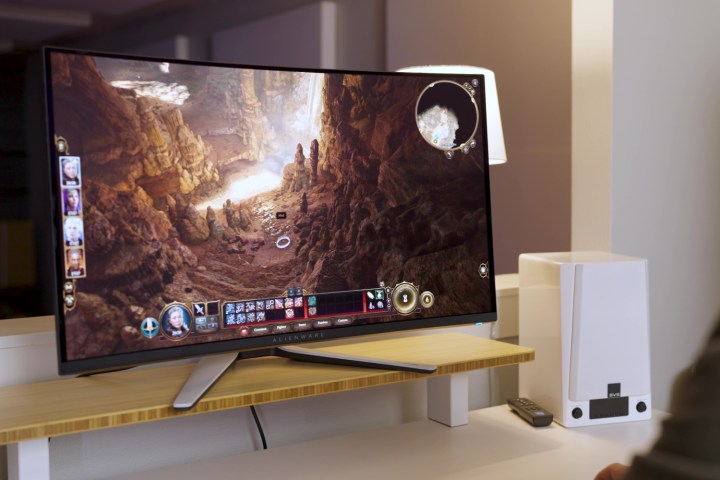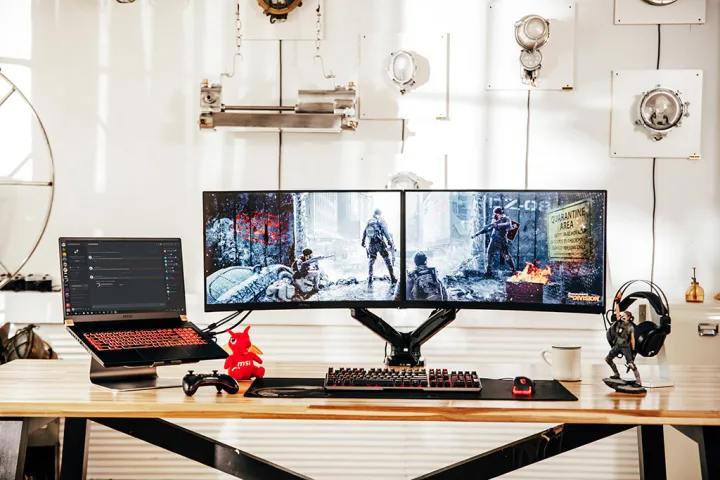
When you’re adjusting your game settings and optimizing your monitor, you can tweak the resolution, detail settings, and often choose what kind of window mode you want to use. Two of the most popular options are Fullscreen and Windowed Borderless. Even though, on the surface, these modes might look and feel the same, there are some very good reasons to choose one over the other. Especially if you’re a multi-monitor user.
Here’s what you need to know to choose the right window mode for you.
Fullscreen benefits and drawbacks
The main advantage of playing your games at fullscreen, is that it’s the most straightforward. Playing at fullscreen gives the application — in this case, a game — full control over the display. That lets it properly set the resolution and can grant a slight performance advantage if the game is optimized for it since Windows knows to focus its attention and performance on that particular application.
If you’re using multiple monitors, fullscreen also locks your mouse pointer within the game window, so it won’t accidentally drift outside of it, resulting in the game minimizing when you click or perform some other kind of in-game action while the pointer is outside the main window.

If you’re playing on a single monitor, there’s Fullscreen is almost certainly your best choice. The downside is that it’s harder to get your mouse pointer to a secondary or tertiary display or interact with an application other than the game. To do so, you need to either Alt+Tab to change the focus of the window, Alt+Enter to switch from fullscreen to windowed (in games that support that command), or press the Windows key to drop out of fullscreen. Only then can you move your mouse to the additional display and interact with it.
The process of switching from fullscreen to not, or moving to a different monitor, also means your display changing to black for a second or two as the driver catches up, which isn’t always convenient.
Windowed borderless benefits
In comparison, the Windowed Borderless mode has all the same advantages and disadvantages as Fullscreen, but flipped. It doesn’t focus on a single window but instead has the game just floating there as one of the applications you’re running, making it possible to access other apps and games, even those on separate displays, far more readily. Crucially, though, it does it without the usual window borders, so it looks fullscreen, even if it’s not.
It’s easier to transition to a secondary monitor because you aren’t locked within the bounds of your game. To access another window, app, or anything else besides, you move your mouse to it and select it, and you’ll instantly be switched to focusing on that instead, bringing it to the fore on your display(s). Alternatively, you can use Alt+Tab to change the focus of the window. Either way, you won’t get that clunky pause and dip to black while the driver adjusts its focus.

This is perfect if you’re running a stream and want to interact with your chat or if you’re playing a game with friends and want to adjust your Discord settings. It’s even great for solo play if you frequently need to drop out of the game to check a Wiki or some other resource to improve your gameplay experience.
It’s not all rosy, though, because while Windowed Borderless has strengths fullscreen doesn’t, it has its own weaknesses, too. If your game requires lots of horizontal mouse movement, you might find your pointer straying outside the bounds of the game window without you realizing it. Then, when you click, you drop out of the game and focus on a different window when you actually meant to click in-game. This can result in some minor annoyance in single-player games, but it can be devastating if it happens at the wrong time in a competitive multiplayer game.
Equally, there are some games that are optimized for fullscreen gaming, meaning that playing in Windowed Borderless can result in slightly worse performance. You probably won’t notice it, but in some games, it is there.
Which should you use?
It really depends on you, your monitor setup, the types of games you’re playing, and whether you want to be able to easily interact with other apps while you do it. If you’re a multitasking streamer with fans to chat with, or you want to be able to quickly fire off a message in a chat app or social media account on another screen, then windowed borderless is probably the better choice. If you want to focus on a game without the risk of accidentally mousing over the wrong window, Fullscreen will be preferable.
But you can always switch between them in your in-game settings, and Screen Mode is rarely a setting that requires a game restart.




